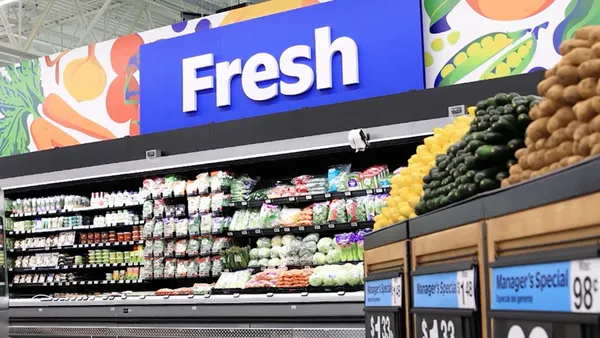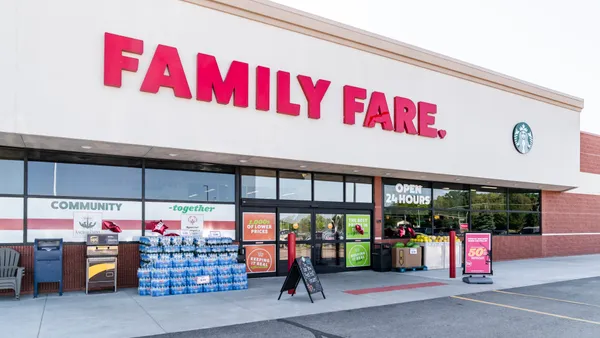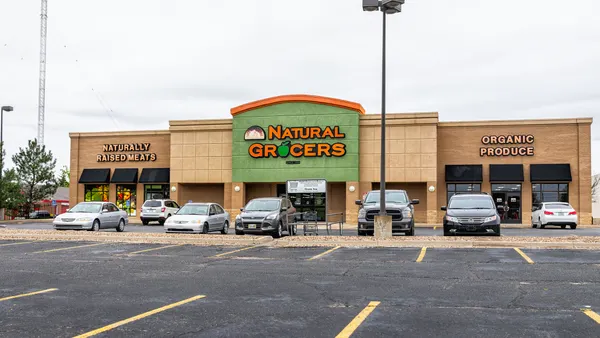Dive Brief:
- Omnichannel retail is now valued at more than $1.01 trillion for the U.S. fast moving consumer goods (FMCG) industry, according to a new report from Nielsen and Rakuten Intelligence. That figure has increased 2.6% from a year ago.
- Of that $1 trillion, in-store grocery purchases account for $413 billion in spending, demonstrating just how strong brick-and-mortar purchasing still is. However, data also shows that e-commerce continues to grow, with grocers seeing more than $21.6 billion in online sales over the last three years – which represents 26% of all online FMCG sales.
- Seen as a bridge between e-commerce and in-store purchasing, click and collect purchases, Nielsen and Rakuten found, represented 48% of all online grocery purchases, up from just 18% in 2016.
Dive Insight:
When it comes to online grocery purchasing, consumers show a clear preference for dry and non-perishable food and beverage items. According to the report, top grocery products purchased online include coffee, nutrition and cereal bars, nutrition drinks, cereals and tea. Presumably, and unsurprisingly, this means that spending in-store is much higher for fresh and perishable items including meat, dairy and produce, which many shoppers still want to see for themselves before they buy.
Outside of the grocery category, Nielsen and Rakuten found that baby care products, pet products, household, health and beauty items are all seeing major e-commerce growth but minimal in-store growth. Grocers should pay close attention to this data and boost these offerings online to create a one-stop shop for consumers. Featuring these products online and supporting them with in-store promotional materials could very well boost sales overall rather than just having online purchases substitute in-store sales.
With the importance of fresh food purchases in store, continued focus on a memorable brick-and-mortar experience remains essential. This is where click and collect truly can be a bridge for omnichannel retail, as Nielsen and Rakuten suggest. Even if shopper behavior reaches a point where consumers purchase three-quarters of their groceries online, grocers can create an enticing in-store experience that makes shopping for remaining fresh items a worthwhile event. For example, shoppers who come to pick up online orders could be greeted with hot food samples or a curbside floral display. Produce or fresh bakery sections could be moved toward the front of the store, inviting customers to pick up a few tempting items they know they can’t order online.
There may be debate among grocers about whether online and in-store grocery sales are coexisting, complementing or competing with each other – but both are very important for grocers right now, and shoppers are showing a desire to have a seamless omnichannel experience. Those who will win in this game are grocers who can transcend the current experience by building online and in-store offerings that work hand-in-hand, are enjoyable and easy, and go above and beyond the basic formats.













